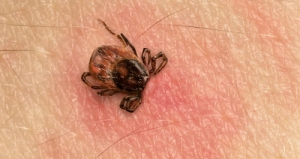Benefits Of Plant Extracts In Lyme Disease (Part 2)
In the last issue of the Health Science News Page, we discussed insect-borne diseases with a specific focus on Lyme disease. Lyme disease was first widely recognized in 1975 in Old Lyme, Connecticut, USA. It is a bacterial infection caused by a type of bacteria called Borrelia. It is transmitted to humans through the bite of a tick that feeds on other small animals, pets, deer, mice, birds, and squirrels carrying the bacteria.
Lyme disease starts with vague flu-like symptoms such as skin rashes, fever, muscle aches, and fatigue. Due to a lack of specific and reliable laboratory tests, the treatment is often delayed and the disease goes on untreated for a long time. In more advanced or chronic Lyme disease stages, people develop chronic arthritis, inflammation of the heart and other organs, neuropathies, sleep disturbances, cognitive impairment and other neurological symptoms including changes in some of the markers of autoimmune diseases. Oral and intravenous antibiotics are usually applied but their efficacy decreases when given in the later stage of infection. Moreover, many of the antibiotics are not effective due to wide-spread bacterial resistance.
Benefits Of Plant Extracts In Lyme Disease (Part 1)
As summer approaches and people start outdoor activities, the season also brings an increased exposure to insects and insect-borne diseases. According to the Centers for Disease Control and Prevention, insect-borne diseases in the US increased more than three times in the last decade. Ticks, mosquitoes, and fleas are the most common carriers of these diseases and they especially increase during longer and hotter summer days.
Lyme disease is one of the most common tick-borne diseases accounting for 3 in 5 cases of insect-borne diseases. It is found in more than 80 countries. In the US it is mainly found in the northeast, midwest and along the Pacific coast. Approximately 476,000 new cases of Lyme disease are diagnosed in the US every year, and close to two million people could be suffering from chronic Lyme disease.

